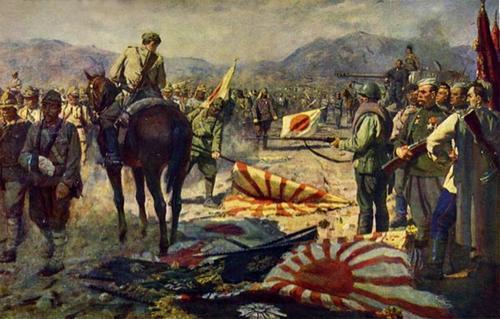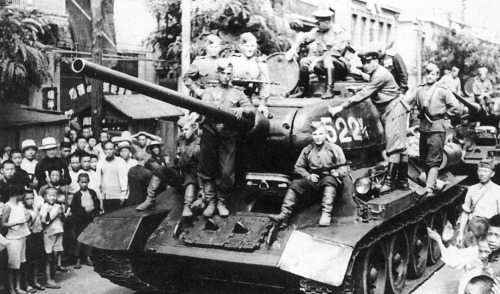The Soviet Invasion of Manchuria, Part V — SurrenderIn case you missed: Part I, Part II, Part
The Soviet Invasion of Manchuria, Part V — SurrenderIn case you missed: Part I, Part II, Part III, Part IVAfter the initial invasion of Manchuria, Soviet forces made short work of the Kwantung Army’s first line of defense. As per plan, the Kwantung Army withdrew to the interior of Manchuria to make their last stand. In the meantime Soviet forces stormed into Manchuria, capturing key cities and industrial complexes across the country. In addition, Soviet forces also invaded other Japanese held territories, such as Inner Mongolia, Korea, the Kuril Islands, and Sakhalin.In the meantime, events were underway that would bring an eventual end to the war. On August 6th, 1945, an atomic bomb was dropped by the Americans on Hiroshima, almost completely incinerating the city. Three days later another was dropped on Nagasaki. Among many in the Japanese government, there was talk of accepting American unconditional surrender. A few days later, news of the Kwantung Army’s defeat in Manchuria pushed the government even further in the directions of surrender. On August 14th, Emperor Hirohito intervened and declared an end to the war. Although the Emperor had little official power, most refused to ignore the will of the Emperor, who was considered an earthly god.In Manchuria the order to surrender wasn’t fully transmitted to all units of the Kwantung Army at once. Many Japanese soldiers surrendered, however many more continued fighting, either not receiving the order, ignoring it, or misinterpreting its vague message. Soviet forces continued their advance, simply maneuvering around Japanese units that continued to resist while capturing important cities such a Mukhden, Qiqihar, and Changchun. On August 18th, the Kwantung Army officially stood down and surrendered to the Red Army. The last Japanese forces surrendered to the Soviets on August 25th. Overnight, the entire Kwantung Army became POW’s of the Soviet Union, altogether around 640,000 men. Soviet forces were heavy considering the operation only involved about a weeks worth of combat. Around 10,000 Soviets were killed in action during the campaign, as well as another 25,000 wounded. Japanese casualties, however, were disastrous, with almost 90,000 dead by the end of the invasion.After World War II Soviet and American tensions grew as the Cold War came into full swing. Among the many bones of contention in the area were the division of Korea, the Soviet occupation of Japanese territories in Sakhalin and the Kuril Islands, and the Soviet Union’s support for Maoist guerrillas in China. The Soviet occupation of Manchuria lasted until May 3rd, 1946. -- source link
Tumblr Blog : peashooter85.tumblr.com
#history#soviet union#manchuria#wwii#russian history#soviet history#japanese history#invasion

